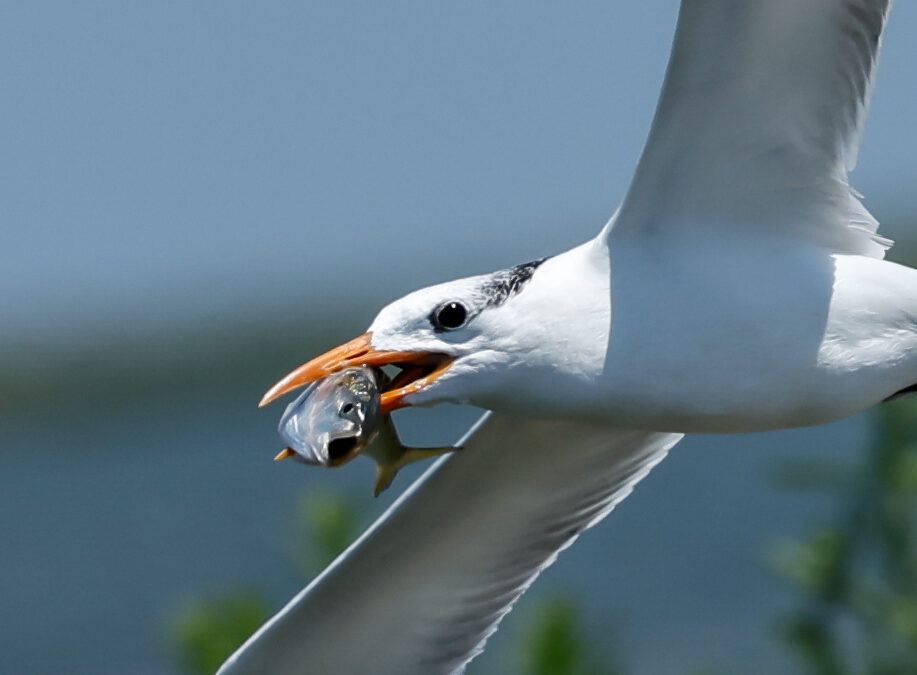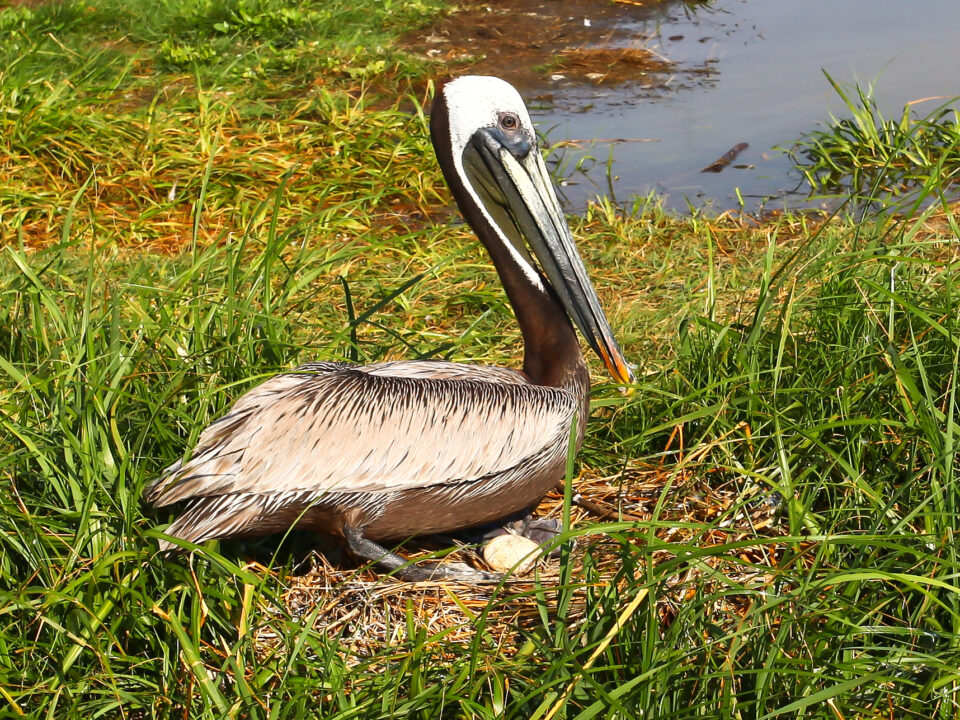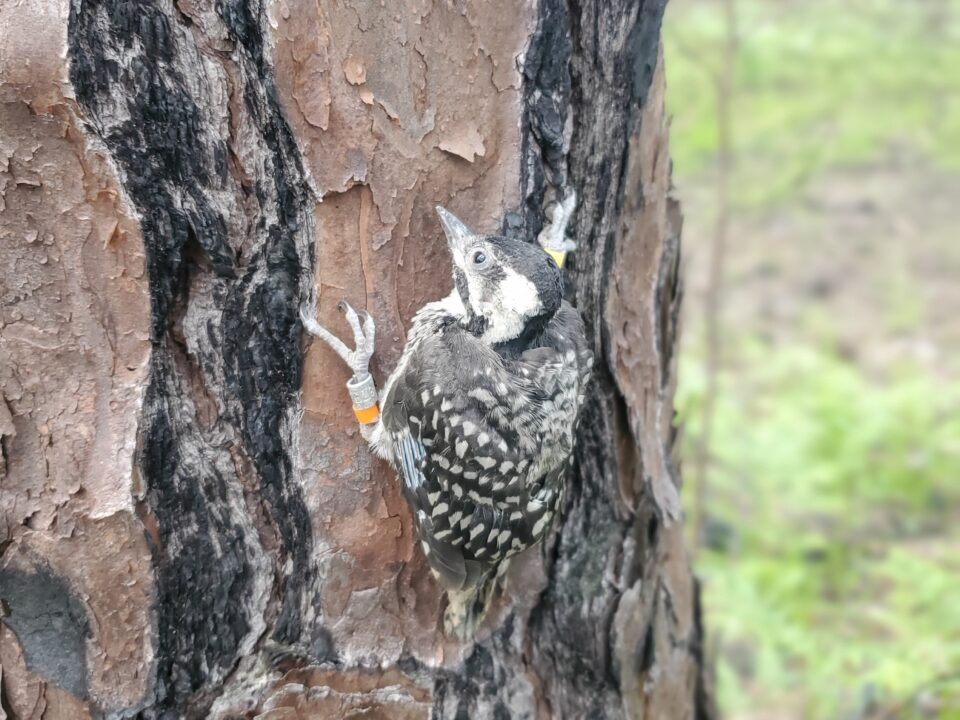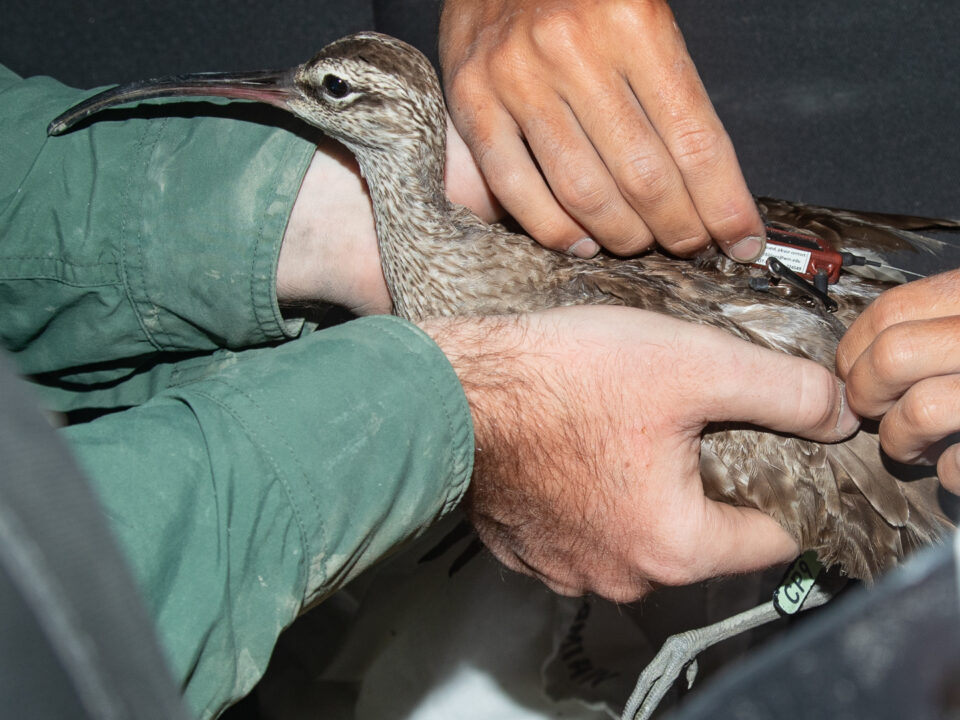Diet of Royals

Tracking Whimbrels Through Emerging Threats
October 8, 2025
Piney Grove’s Red-Cockaded Woodpecker Rebound
October 8, 2025By: Bryan Watts
10/2/25
The royal tern is the most abundant large tern throughout the mid-Atlantic region. Seen loafing on pilings and docks throughout the Chesapeake Bay during migration, royals use a relatively small set of sites for nesting. Nesting sites are typically sandy islands that lack ground predators and are in close proximity to productive waters with large numbers of forage fish.
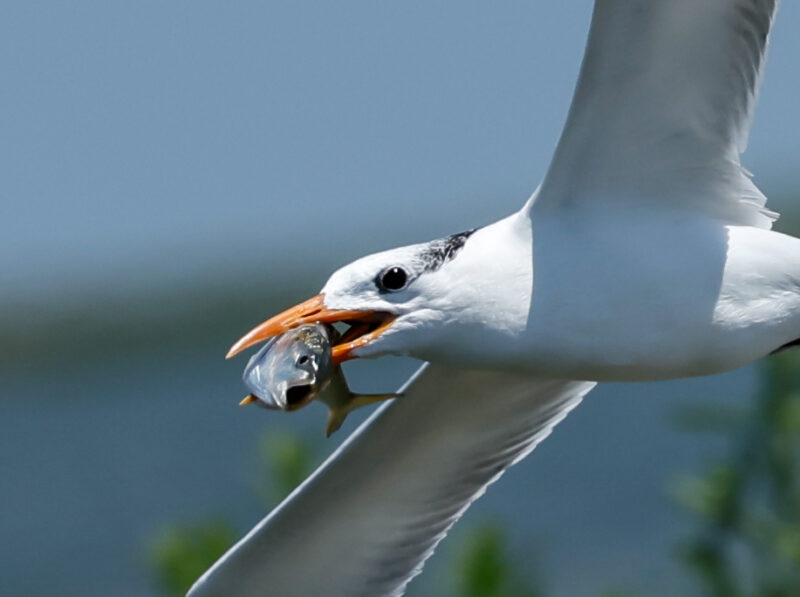
On 23 July of this year, I was out on the Bay with a team of field biologists from the Virginia Department of Wildlife Resources to check on the royal tern colony on Clump Island. The site is a sand and marsh island located north of Great Fox Island and east of Tangier Island. Royals and other seabirds have nested on this location for many years. While the rest of the crew used spotting scopes to record field-readable band codes, I took the time to photograph adults carrying prey to the colony to get a snapshot of diet in this location. During the chick phase of nesting there is a constant stream of adults arriving with prey from far-flung foraging sites. These adults are able to find their single chick within a sea of chicks and adults to deliver their catch.
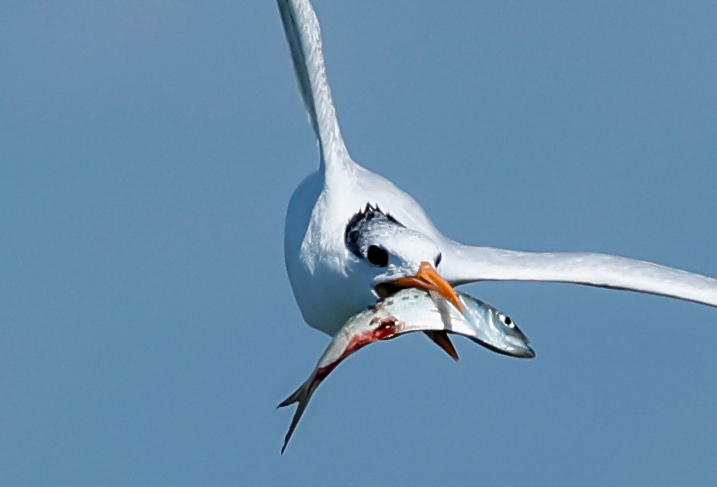

In a very short period, I was able to record a sample (N = 154) of individual prey carried to the colony by adults. Most (95%) of the prey could be identified using the photos. Several prey groups were identified in the sample including speckled trout, killifish, silversides, spot/croaker and soft-shelled blue crabs. The most abundant (74.7%) prey was Atlantic menhaden.
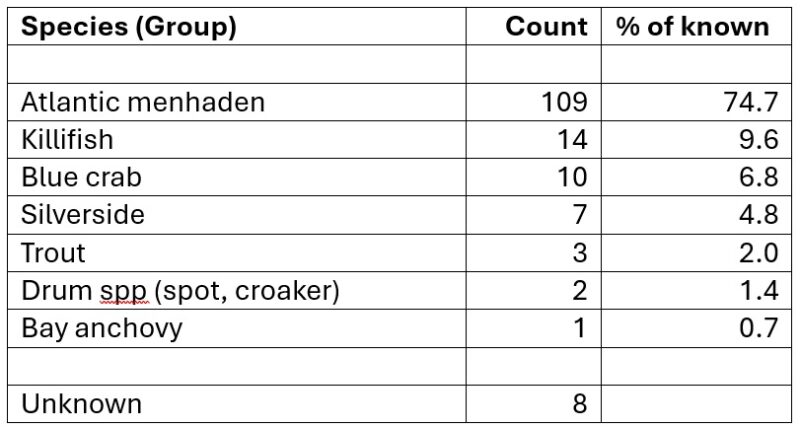
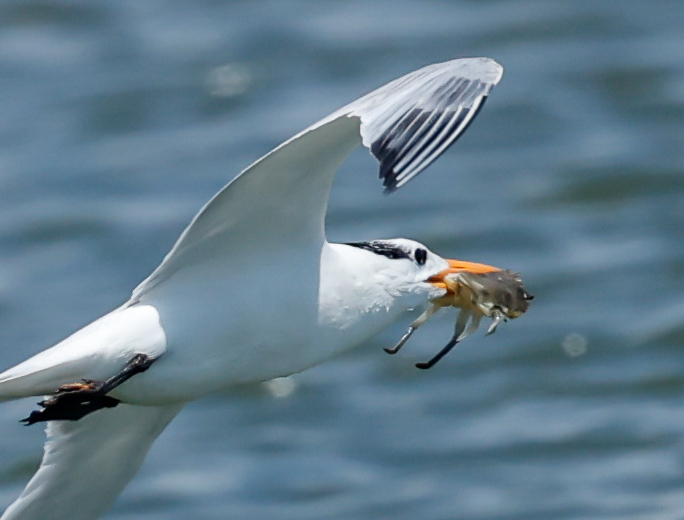
During the 2003 and 2004 breeding seasons, Deniz Aygen, working on her masters thesis with UNC Wilmington, studied the diet of royals on Fisherman Island around the mouth of the Bay. Deniz recorded 45,000 prey items coming into the Fisherman colony. The sample collected this July was generally comparable to the much larger sample collected by Deniz. The menhaden group represented 61% of the diet when both years are combined but a higher percentage of the sample in late summer when these photos were taken. She also recorded the other prey groups (and a wider range of species) in similar proportions except for bay anchovy. Bay anchovy accounted for 23% of Deniz’s diet sample but were not detected in numbers within the July sample. This important schooling fish is known for both spring and fall peaks in abundance but also year to year fluctuations.
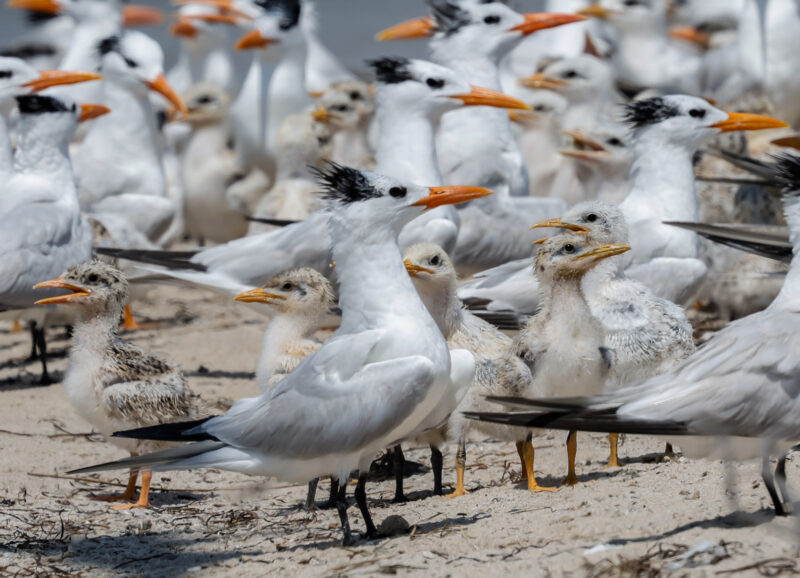
Royals were using juvenile menhaden that were mostly two to four inches in length. Referred to as peanut bunker, these juvenile menhaden are abundant in the Chesapeake Bay and form dense “bait balls” that are ideal for use by royal terns. On calm days these bait balls may be seen dotting the water surface throughout many areas of the Bay

